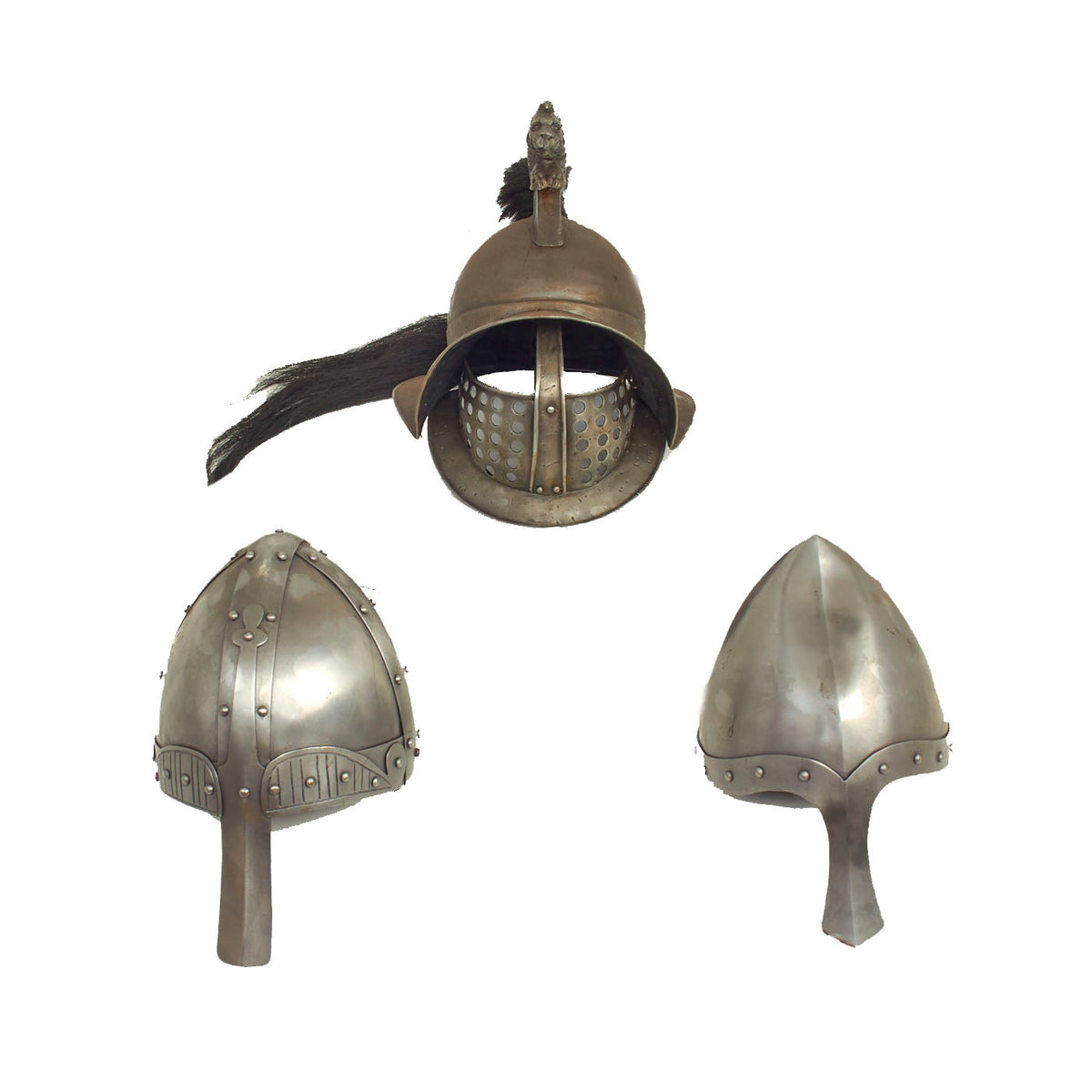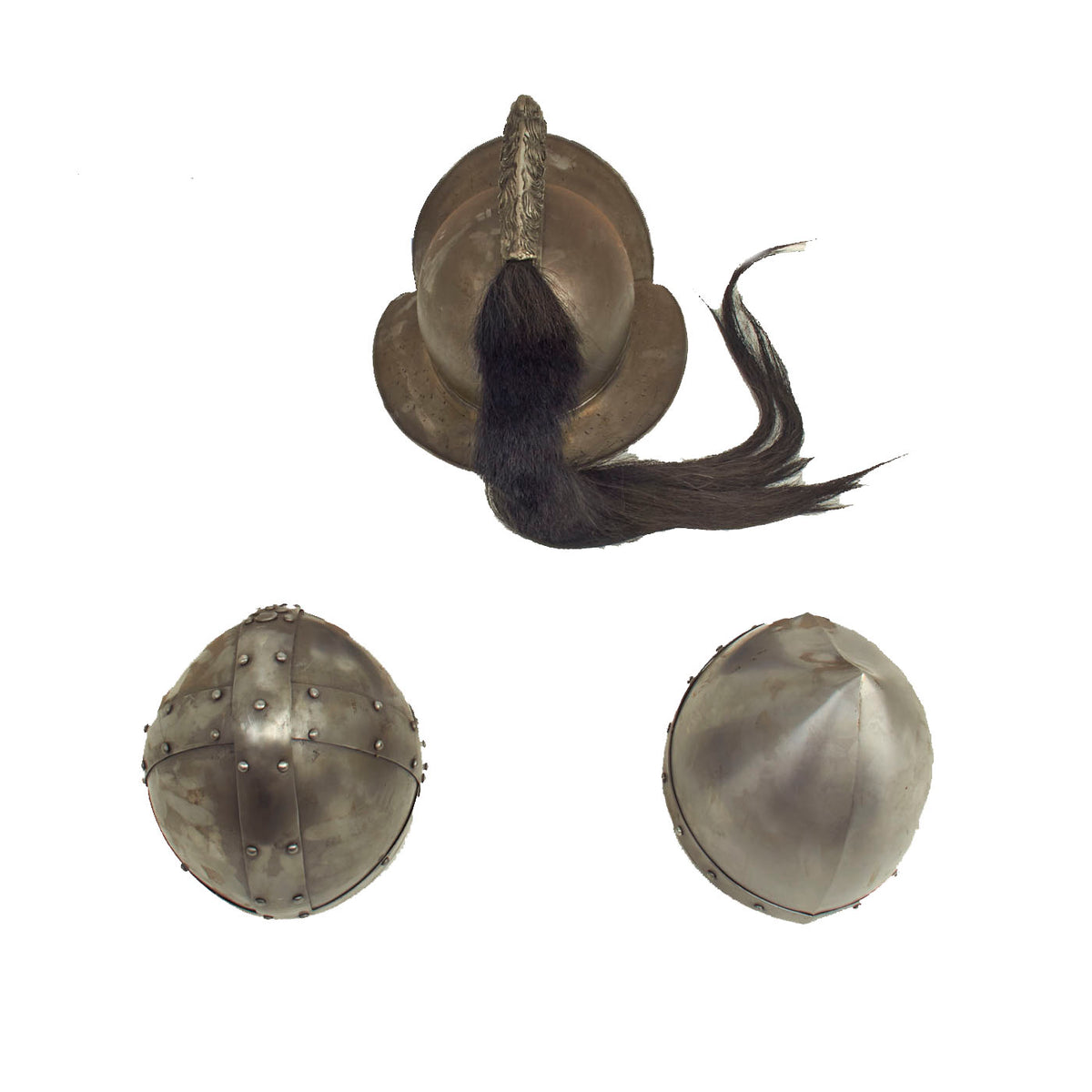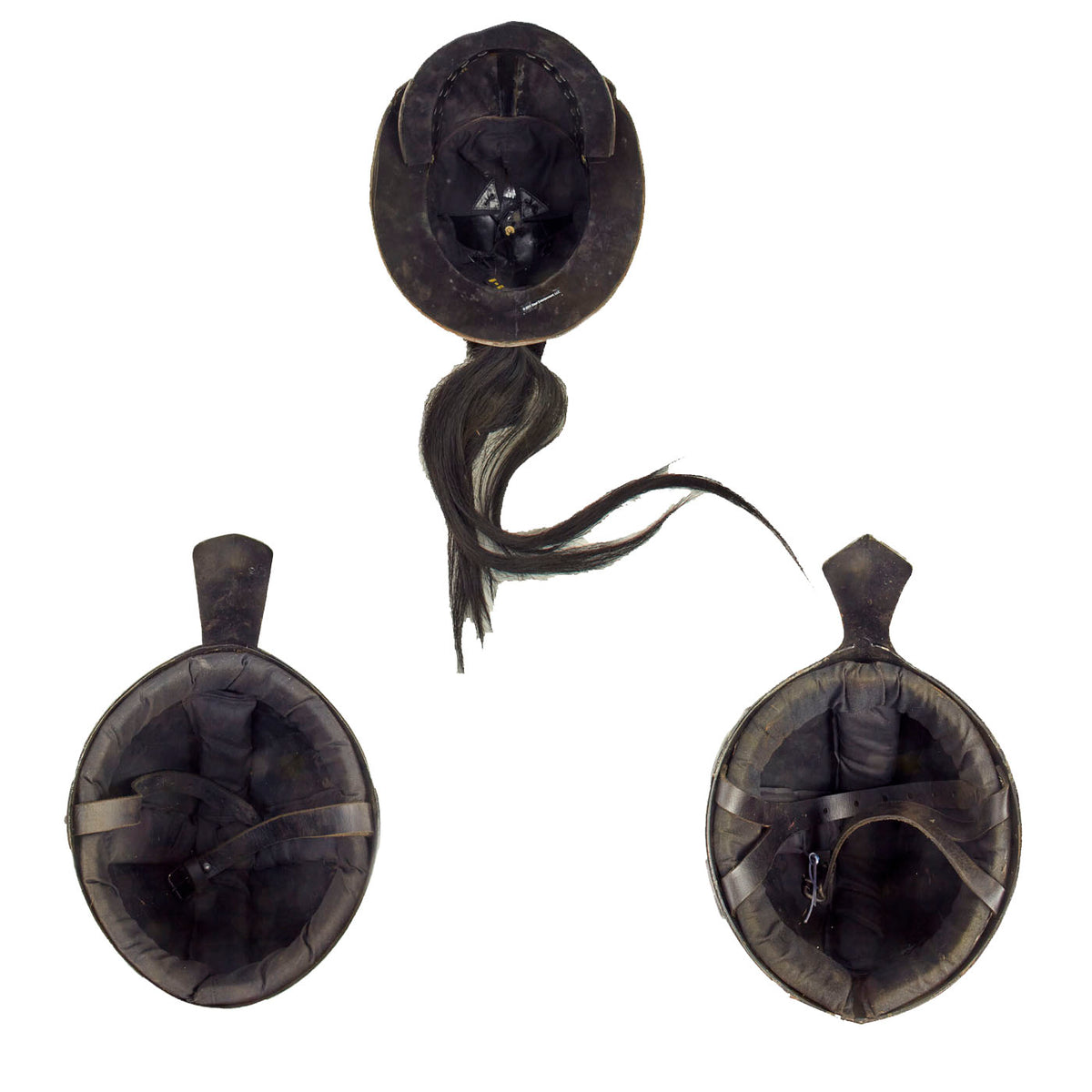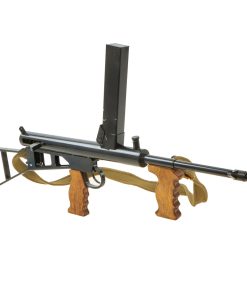Ancient Roman Gladiator Murmillo Cassis Crista Helmet With Medieval Style Skullcap Nasal Helmets With Nose Guard – 3 Replica Helmets Original Items
$ 295,00 $ 118,00
New Made Items: Only One Lot of 3 Available. Just recently discovered in the back of our warehouse here at IMA are 3 wonderful ancient style helmets! These are relatively new made items and come complete with leather lining and padding on the insides.
The helmets in this lot:
– Roman Gladiator Murmillo Style Cassis Crista: The murmillo was a type of gladiator during the Roman Imperial age. The murmillo-class gladiator was adopted in the early Imperial period to replace the earlier Gallus, named after the warriors of Gaul. As the Gauls inhabiting Italy had become well integrated with the Romans by the time of the reign of Augustus, it became undesirable to portray them as enemy outsiders; the Gallus-class gladiator thus had to be retired.
– x2 Nasal Helmets: The nasal helmet was a type of combat helmet characterized by the possession of a projecting bar covering the nose and thus protecting the center of the face; it was of Western European origins and was used from the late 9th century to at least c. 1250.
The nasal helmet was characterized by the possession of a nose-guard, or “nasal”, composed of a single strip of metal that extended down from the skull or browband over the nose to provide facial protection. The helmet appeared throughout Western Europe late in the 9th century, and became the predominant form of head protection, replacing previous types of helmet whose design was ultimately based on Late Roman types such as the ridge helmet and early helmets of spangenhelm construction. Early nasal helmets were universally conical in shape. The skull could be raised from a single sheet of iron or be of composite, segmented (spangenhelm) construction. The spangenhelm variety was, in general, the earlier method of construction. Single-piece skulls, being technically more difficult to produce, became more common with the increase in metallurgical skill over time.
Though nasals had been used on earlier helmets, and on contemporary helmets found in Byzantium, Slavic Eastern Europe and the Middle East, those characteristic of the nasal helmet were in general larger and were fully integrated into either the skull or browband of the helmet. The nasals of other helmets tended to be riveted to the skull either directly or as part of a T-shaped, combined nasal and eyebrow-piece.
All helmets come ready to wear or display!
Prompt Shipping and Professional Packaging
We provide a variety of shipping options due to our long-running partnerships with UPS, FedEx and DHL. Our warehouse personnel are well trained and will pack the goods according to our exact and precise specifications. Before shipping your items will be thoroughly inspected and secured. Every day, we deliver to thousands of customers in different countries. This is a sign of our determination to become the largest online retailer worldwide. Both Europe as well as the USA have warehouses and distribution centers.
Note that orders containing more than one item will be subject to a processing period that is based to the particular item.
Prior to shipping the items, our staff will carry out an exhaustive inspection of the products you ordered. Today, most orders will be delivered within 48 hours. The estimated delivery time is between 3-7 days.
Returns
The stock is constantly changing. It's not entirely managed by us since we are involved with multiple entities, including the factory and our storage. Therefore, the actual inventory could alter at any time. It is possible that you will not receive your order after the order has been made.
The period of time is 30 days. Unfortunately, if 30 days have passed since you purchased your product, we are unable to provide a refund or exchange.
The item must not be in use and must be in the original packaging. The item must be in the original packaging.
Related products
Uncategorized
Uncategorized
Uncategorized
Uncategorized
Uncategorized
Band of Brothers ORIGINAL GERMAN WWII Le. F.H. 18 10.5cm ARTILLERY PIECE Original Items
Uncategorized
Uncategorized
Uncategorized
Australian WWII Owen MK1 Machine Carbine SMG Custom Fabricated Replica with Sling Original Items
Uncategorized
Uncategorized
Uncategorized
Uncategorized
Uncategorized
Uncategorized
Uncategorized
Uncategorized
Uncategorized







































































